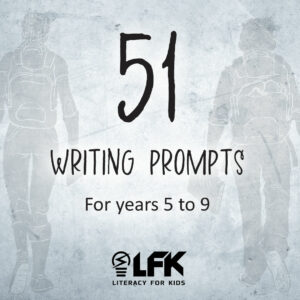Reaching Struggling Readers and Reader Anxiety

There really is no better way to open doors than through literacy. And it’s not just reading – it’s access to knowledge and it’s access to a future.
We can’t exaggerate the importance of learning to read, nor can we exaggerate the challenges that people have to overcome when they are not proficient readers.
As we start the new year, I want to continue to advocate for and work toward improved literacy for our students. Let’s explore how we can help struggling readers and kids with reading anxiety. I feel that we can address this with a three-pronged approach.
1. Managing Reading Anxiety
Many of us don’t connect anxiety with dyslexia and other reading barriers. It’s not hard to imagine that someone who has a lot of difficulty learning to read, would be uncomfortable (and no doubt anxious) if they were asked to read aloud – especially in front of others, even if it is a small group.
If you start thinking about reading as being something that makes you anxious, many will experience a type of cognitive flooding. This means that when you see a passage your mind starts whirring, thus making it difficult for you to concentrate on the task at hand. And so a negative cycle starts whereby when you are supposed to be reading, you can be flooded with emotions and feelings that interfere with your reading. The flow-on effect is that it’s more difficult for you to learn to read and the cycle of reading anxiety continues.
Therefore, anxiety management becomes essential and part of the reading intervention. If we teach children how to monitor and recognise this anxiety (in much the same way we do as adults), how to calm themselves, and how to use strategies to reduce anxiety then they are likely to be more successful at reading a piece of text.
I am often contacted by parents seeking help with reading strategies as their children may be so anxious about reading that they don’t want to go to school.
Reading anxiety impacts the entire function of reading. So the integration of anxiety management with improved reading skills can benefit a child’s relationship with reading.
2. Comprehending the Text
A big push to improve reading comprehension is inference-making. Our students need to make inferences about what the author means: what is the author’s intent? what is the author saying and what are the implications of that? If our learners can’t make these kinds of inferences, then reading comprehension is going to be elusive. We can use an example with information text (such as history or science), where we have to be able to use some of the figures, tables, pictures and graphs to add information to what we are reading.
Alongside phonics and foundational skills, background knowledge is going to take our readers a long way. If, for example, I were reading a book in English about a black hole (or abstract physics concept), I would have the ability to read the words. I might even know what most of the words meant. However, my background knowledge would be inadequate, so my reading comprehension would be affected.
Studies have shown that readers use their background knowledge — vocabulary, facts, and conceptual understanding — to comprehend the text they read. Click here for an article The Role of Background Knowledge in Reading Comprehension.
3. Deliberate Practice Reading
Being a successful reader and comprehender involves deliberate practice. I want to point out, however, that practice doesn’t always reward students with improved reading. Consider this analogy: If you want to become a better cook you need more than just practice. Yes, you’re going to have to get in the kitchen and cook, but to really improve your cooking skills you’re going to need guidance, you need feedback and you need support.
These are useful to keep in mind with small group instruction. Students need to read a wide range of books. They need to read books at various levels. They need to read decodable books. They need to read books that have words that they’ve learned and practiced. They also need to read other kinds of texts that allow them to acquire more access to words and to build background knowledge. The more difficult and challenging these texts are for the student, the more support they need from the teacher.
The feedback from teachers using our programs – Literacy for Kids & Literacy for Boys – really affirms the above skill. We can support teachers with content that appeals to students, where you are equipped with an engaging, high-impact literacy resource as leverage to help struggling readers (and can be used on an interactive board as a teaching point for the whole class).
Summing Up
There’s no secret sauce that will make it simple. It’s challenging to deal with a range of learners. Our classrooms are composed of different learners with a lot of different needs, and it requires our innovation and creativity every day.
Want to shape confident readers? Want more from your literacy program? Watch how this entire Year 6 cohort achieved a 100% improvement in their comprehension and spelling results (after independent, standardised testing). Some students were below testing at the commencement of the school year ~ yet showed reading improvement by December!
Contact us for a 30-day free trial in your school or classroom. New schools receive this terrific Teaching Resource: 51 Writing Prompts. These are a complete hit with our schools and you will not be disappointed with these image-rich, kid-centred Writing Prompts that will enthuse your writers.




Brought to you by Tanya Grambower
